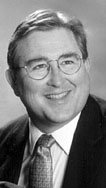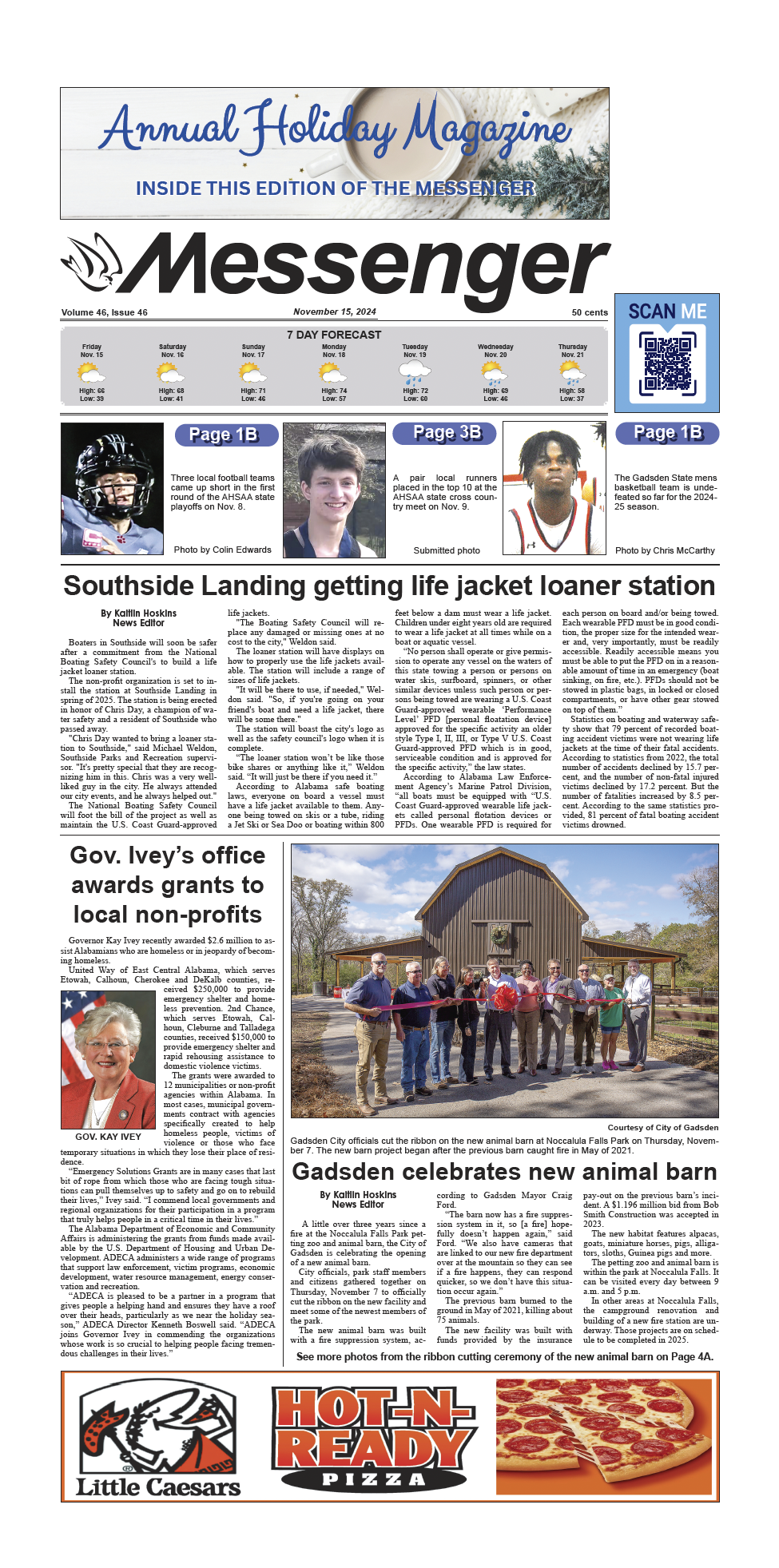Ed (W.A.) Lewis of the Etowah Historical Society recently brought a booklet to the Vagabond about someone from the Dwight Cotton Mill Village. The book is called A USA Mill Town Saga of the 1900’s.
Eugene Livingston wrote what he remembered about the times, hardships, laughter and love shared between two families, Jim and Ester Livingston and Roy and Betty Emery as they lived in the early 1900’s.
Mr. Livingston’s recollection of the times and events that happened in the mill villages of Alabama City, Alabama and Lupton City, Tenn., as well as the other places mentioned, will captivate your imagination, make you laugh and cry.
It will also take you back in history to the good times and the hard times and perhaps stir the memories you may have of your own families of years gone by.
Owners in New England decided to move their mills to the south where labor was cheap and the weather was better for the operation of their mills.
Little mill villages began to spring up over the south, and after over a 100 years of operation the mill owners are always on the move, still looking for cheap labor. Many closed and moved on to Mexico, Japan and China. This book is typical of all mill villages and families.
The book is the genealogy and story of the life and times of the Livingston and Emery families, which begins in the early 1900’s.
Back in June of 1999 Eugene Livingston could remember back 86 years ago. He claimed to remember things that happened before he learned to walk.
Eighty-six years is a very long time, and some of the dates, places, and names may not be exact as he wrote, but it is the best of his memory, the way the following was:
“Lewis Livingston married Nannie Croft. They lived at places called Hokes Bluff and Ball Play, Alabama. To this union were born three boys and two girls; Claude, Fred, Jim, Maude and Minnie.
Claude married Beulah King. Their children were named Clyde, Louise, Cla-ra and Mazie.
Fred married Edna Ashley. Their children were named Lillian, Otis, Joe and Marine.
Jim married Esther Mooney. To this union were born 11 children – Eugene, Jesse, Mary, Maggie, Francis, Ruth, Helen, Estelle, June, Kenneth and Jimmy.
Maude married Ben Obar. Their children were Robert and Margaret. I don’t remember the names of the other two girls.
Minnie married a man by the name of McDaniel. I can’t recall his first name. Their children were Lee, Willie and Lottie.
I don’t remember much about Grandpa’s (Lewis Livingston) and grandma’s family. Grandpa had a twin sister named Mattie and one brother.
Grandpa said one morning his mother called all the children into the house and told them that their dad had been killed in the Civil War; that she could not farm and that none of them were old enough to work, so she would have to give them to the neighbors to raise. She told them that all the food they had was the corn meal in a barrel and that when it was all eaten, they would have to break up the family.
The children watched the barrel very closely, and the time finally came when the barrel was empty and so Great Grandma Livingston had to send the children out to the neighbors – one here, and one there.
Grandpa said he was about five years old at this time. His older brother, who was about 12 years old, left home that morning riding a big white horse and they never heard from him again. I don’t know what happened to Great Grandma or the other children. Grandpa and his twin sister, Mattie, grew up and each raised a family in this neighborhood.
Jim, that’s what I call my dad, said that when he was a little boy, standing in his yard, he could see steam boats going up and down the Coosa River.
After he was older, he would go with his brothers, Claude and Fred, to swim in the river. I believe Jim was born in 1891.
Around 1900, [Actually before 1895] or close to that year, some rich people from New England came to Northeast Alabama and decided to build a cotton mill and a town. That is how Alabama City came into existence.
I believe Dwight Cotton Mill was the largest cotton mill in the world at that time. They employed about three thousand people. All the streets in the town were named for famous people and places, like Canterbury Station, Wall Street, and Lake Front Avenue.
Canterbury Station had a street car stop, grocery store, dry cleaning shop and, later on, an automobile garage. Wall Street was about the same – stores, barber shop, etc..
On the north end of Wall Street was a Post Off-ice (I saw this being built). On the opposite side of the street, a three-story, wood frame hotel. Mostly young, unmarried people lived here. The street car stopped here too.
The street car ran from Gadsden to Alabama City and Attalla, a total of about eight miles. The cost to ride it was seven cents.
There was a railway station where you could catch a train to Birmingham, Chattanooga or Guntersville.
At Guntersville, there was a steamboat stop on the Tennessee River.
The mill was huge, two city blocks long, four stories high and 100 feet wide.
On the north side of the mill was a lake. At one end of the lake were bath houses. These were rooms where you could go to change into a bathing suit.
Midway of the lake was a walkway to the mill. There was also a building with a floor, walls about three feet high and a top on it. This was called a bandstand.
Every Saturday night a band would play music there. They sold ice cream and cake. The lake had a sidewalk around it and electric lights. Young people would walk around the lake and ‘court.’
The company management went all over Europe hiring people to come to work at Dwight Cotton Mill.
The pay was very good – as much as four dollars for two weeks’ work. They came from Germany, Italy, France and many other countries The company paid their way.
They came from all over Europe. They could not speak English, but they would work in the mill.
The company must have built about one thousand houses and they named some of the streets for famous people in the textile business. They would hire anyone, even children who were as young as nine years old.
All the houses were wood frame with no electricity or plumbing. Each house had an outhouse – a two-holer – and there was a hydrant between each two houses.
There was a back porch with a water bucket and dipper. There was also a pan where you could wash your face and a towel hanging on a nail driven into the wall.
In the wintertime, you had to break the ice in the water bucket to have water to wash your face. Screened doors and windows had not been invented at this time.
I don’t know at what date Grandpa decided to move into town, but it was shortly after the company started hiring workers.
The temptation was just too much for Grandpa to resist. After all, he had three boys and two girls who each could make four dollars every two weeks.
This was more money than they ever saw on the farm in one year. So to Alabama City they moved ….into a house on a street called Short Forest. Their neighbors were the Mooneys, the Wootens, the Emerys, the Thompsons and seven Italian families.
Grandma said the Italians were a very clean and tidy people. They had an oven built out of brick in their back yard and every Sunday they cooked all the bread they would eat for the next week. They also did all the washing of their clothes.
Uncle Claude was my favorite uncle. He was a deacon in the Baptist Church, and a Boy Scout leader.
He married a girl named Beulah King. She had a sister (I cannot remember her name) and a brother named Archie.
Archie was an elevator mechanic. He worked in Charlotte, North Carolina. Aunt Beulah’s sister and her husband, their mother and father, the Kings, lived at Lupton City, Tennessee, where we later lived.
I can remember that Uncle Claude tried to get Jim and Mama to let Maggie and me go to Sunday School with him every Sunday, but they said no, that we didn’t have clothes good enough to go to Sunday School.
Then Uncle Claude tried to get Jim and Mama to let me join his Boy Scout group but Jim said no, that if they had another war, I would be the first one to go.
Uncle Claude said, ‘Now, Jim, you know the government will not take Boy Scouts for soldiers.’
Uncle Claude said he would buy my uniform, bat Jim still said no anyway.
Uncle Claude never slept more than four hours a night He got off work at six o’clock in the evening, walked one-half mile home, ate supper, read the Gadsden paper a few minutes, then walked about a mile to our house at Canterbury Station, and sat around and talked an hour or so.
I will never forget how he would cross his right leg over his left one and sit there swinging his right foot back and forth, laughing and telling about funny things that happened. Uncle Claude never lied, but I am sure he stretched the truth a lot.”
NOTE: Check again next week as we continue the story of Eugene Livingston and the Mill Village.




